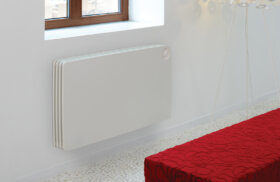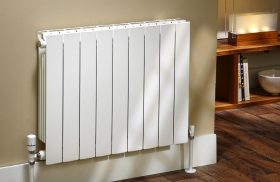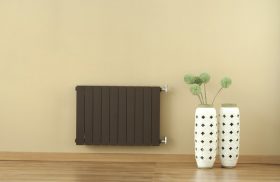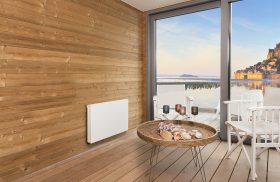One of the questions we get asked most frequently is ‘What size radiator do I need?’ Unfortunately, there’s no easy answer. There are a lot of factors that need to be taken into consideration when you’re working out the best-sized radiator for each room. What you cannot afford to do is make a guesstimate based only on the size of your room. And that’s where our handy Heat Calculator comes in.
It’s hugely important to make sure the size of each radiator provides the optimum heat output for each room. In times when we’re all keeping a close eye on energy costs, efficiency matters – and ensuring you get a radiator that’s the correct size will mean you’re a lot less likely to waste energy by making your central heating system work harder than it needs to.
Room Heat Calculator
In order to work out the size of radiator you need for each room, you first need to work out how much heat – in terms of Watts and BTUs (British Thermal Units) – is required. The higher the BTU number, the more heat the radiator can produce to warm the room. There are complex engineering calculations that will allow you to do this manually, but quite frankly, our simple online Heat Calculator is a much better option!
You will need to input a lot of information about each room into the Heat Calculator. There are many variables that will affect the accuracy of the calculations and make a difference to the size of the radiator recommended:
- Room dimensions
- The type of room (bedroom, bathroom, etc.)
- What is above or below the room (concrete floor, flat roof, etc.)
- The type of outside walls (brick cavity, wood frame, etc.)
- Insulation (cavity walls)
- The number of external walls
- The type of windows
- Total square metres of windows
Variables that affect the heat calculation
Every room is different. Not just in size and position but also in use. The optimum temperature for each room depends on the activities that are carried out in it. For example, kitchens generally need a lower ambient temperature because the appliances in them will give out heat when they’re in use. The ambient temperature of bedrooms is also lower to create a temperature that’s more suitable for sleeping in. The ambient temperature in the bathroom tends to be a bit higher to keep you nice and warm when you’re having a shower or bath.
We will always help you
When you buy radiators from us, we will always double-check the heat calculation in order to be certain you are buying a radiator that’s the right size. Any miscalculations could hold up the installation work, which can be hugely disruptive and cause delays, especially if you’re changing the radiators as part of renovation work.
We’ll be able to advise whether it’s best to have a double-panel radiator or a single-panel radiator – a double-panel radiator has a much larger surface area, which means it’ll heat a bigger room. If you’re opting for a traditional cast iron radiator, the same applies to the number of columns. A four-column radiator has a larger surface area than a two-column one, making four columns more suitable for bigger rooms. If you have an awkwardly shaped room, we may even suggest you opt for two smaller radiators so you can provide heat evenly.
To find out more, visit one of our radiator showrooms where you’ll also be able to look at examples of our extensive range of designer radiators, traditional radiators, energy-efficient radiators, and electric radiators.
St Albans | Brighton | Islington | Clapham | Leamington Spa | Bristol





